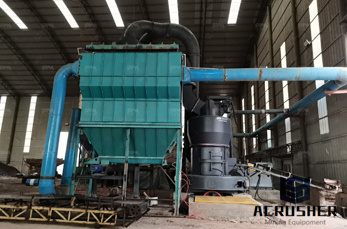 WhatsApp)
WhatsApp)
ball milling technique has been used mainly for preparing ferrite nanoparticles and not many studies have been conducted on the preparation of nanoparticles of different materials except a few910 In this study systematic efforts have been made to prepare and study the properties of the nanoparticles prepared by milling soft and hard magnetic materi

Synthesis of Magnetite Nanoparticles by TopDown Approach from a Sep 9 2015 Due to that interest in very recent years high energy ball milling has of ball milled boron particles under two grinding techniques such as dry

Usually wet ball milling is suitable for pretreating magnetite concentrates while dry ball milling is better for hematite concentrates because finely ground hematite concentrates are difficult to filter However dry ball milling is confronted with difficulties in dust collection and high capital investment

Synthesis of magnetite nanoparticles by high energy ball milling Jan 26 2013 We report on the preparation of magnetite nanoparticles with size ranging from 12

A series of samples consisting of spinel Fe 3 O 4 nanoparticles with controlled particle sizes and increasing concentration has been obtained through ''mild'' ball milling BM experiments by using an organic carrier liquid We have succeeded in producing quite narrow particle size distributions with mean values 〈d〉∼7–10 nm by an appropriate choice of the milling time for each

Ball milling nanoparticles In this work hematite nanoparticles were successfully obtained by milling hematite at a mill speed of 600 rpm proving that dry highenergy milling is an alternative route to produce nanoparticles over the exorbitant chemical route which is harmful to the environment

Morphological and magnetic characterization of Fe Co and FeCo nanoplates and nanoparticles prepared by surfactantsassisted ball milling Narayan Poudyal Chuanbing Rong and J Ping Liua Department of Physics The University of Texas at Arlington Arlington Texas 76019 USA

In this investigation the chemical and structural characteristics of Fe nanoparticles synthesized by highenergy ball milling have been explored After the milling process the nanoparticles were

Magnetite is one of the nanoparticles used in wastewater treatment because of its specific large surface area high reactivity in adsorption and recoverable from treated water via magnetic separation technology Preparation method of magnetite nanoparticles is the important key to

Nowadays the direct chemical synthesis of magnetic iron oxide particles is commonly used in industry although it is found to be very complicated and expensive Mechanical milling is a very convenient and promising way to produce nanoparticles powder Wang and Jiang 2007 Grinding mills typically used in the process include the attrition jet

Apr 29 2011· Nanoparticles of zinc oxide ZnO are increasingly recognized for their utility in biological applications In this study the highenergy ball milling HEBM technique was used to produce nanoparticles of ZnO from its microcrystalline powder

Preparation of magnetite nanoparticles by planetary ball milling process • Application of magnetite nanoparticles in the heterogeneous Fenton removal of CIP • Evaluating the effect of operational parameters on heterogeneous Fenton process • Determination of

Handling the particle size and distribution of Fe 3O 4 nanoparticles through ball milling Gerardo F Goya Laboratorio de Materiais Magneticos Instituto de Fı´sica Universidade de Sa˜o Paulo

Magnetic properties of magnetite powder prepared by ballmilling of stoichiometric mixture of hematite and iron in an inert atmosphere are reported

Effect of milling time on the synthesis of magnetite nanoparticles by wet milling Article in Materials Science and Engineering B · August 2010 with 287 Reads How we measure reads

Abstract We report on the preparation of magnetite nanoparticles with size ranging from 12 nm to 20 nm by high energy ball milling The synthesis is made using stoichiometric amounts of distilled water and metallic iron powder

Mar 13 2018· Abstract We present the process of synthesis and characterization of magnetitemaghemite nanoparticles by the ball milling method The particles were synthesized in a planetary ball mill equipped with vials and balls of tempered steel employing dry and wet conditions

However wide size distribution and particle contamination are still two major barriers en route for further applications of ballmilled magnetic nanoparticles For instance a ballmilled nanoparticle powder with average size of 25 nm can easily have a wide size distribution from

Jun 15 2012· Steps in ball milling method 1 As the name suggests the ball milling method consists of balls and a mill chamber Therefore over all a ball mill contains a stainless steel container and many small iron hardened steel silicon carbide or tungsten carbide balls are made to rotate inside a mill

ProductsServices for Ball Milling Nanoparticles Nanoparticle and Powder Processing Services 152 companies Nanoparticle and powder processing services perform milling crushing classifying screening grading atomizing coating or production of metal or chemical powders and nanomaterials on a contractual basis

Highly crystalline superparamagnetic magnetite nanoparticles with relatively high saturation magnetization have been successfully synthesized from an aqueous goethite suspension at room temperature by the ballmilling treatment The mechanochemical effect induced by the ballmilling treatment causes reduction of ferric ions and promotes the formation and crystallization of magnetite

magnetite ball mill Synthesis of magnetite nanoparticles by high energy ball milling Jun 15 2013 We report on the preparation of magnetite nanoparticles with size ranging from 12 nm to 20 nm by high energy ball milling

Chen et al have reported the synthesis of magnetite nanoparticles by ball milling of Fe 2 O 3 in a wet medium 22 They have shown the significance of water as a medium for milling in the
 WhatsApp)
WhatsApp)